Ioan Aurel Mureșan, a painter of a refined intellectual character, broke out in the ‘80s with the series Pământuri / “Earths”, in which the neo-expressionist style was favored over matter in constructing the symbol. Conceived at the limit of abstraction, the cycle evokes the archetypes through a heavy pictoriality, matte matter in earthy tones, passionately kneaded and modeled in alertness. The command of this initial route was met with international validation at the end of the ‘90s, with the artist’s inclusion in the Sao Paolo Biennale and, at the same time, with a teaching post at the Painting department within the Cluj University of Art and Design. During the four decades that have passed since his debut, Mureșan continued working under a consistent schedule, in coherent series that are both thematically and stylistically well defined. Pământuri was followed by an almost monochrome cycle of works, Semnele zidului / “The Wall’s Markings”, centered on sketching and the neo-expressionist graphics of the 1988-90 protests. After 1992, the artist dedicated himself to a singular allegorical subject, which became a fictional bubble which evolved, over the span of 13 years, into two cycles of unique chromatic luxuriance and imaginative force: Minunatele ceasuri ale Ducelui D’Ivry / “The Marvelous Clocks of Duc D’Ivry”. Inspired by multiple oriental sources (miniatures, stamps, textiles) as models for image generating, the painter envisioned a pictorial narrative in constant flow, featured as a hypnagogic world, which fascinates through the balance between congestion and fluidity, between motif and frame in a perpetual expansion as seen in the horizontal serpentine sketch, creating an almost obsessive shine with masses of pure colors, ranging from lilac reds to dark blues, exalted by the fine calligraphy overlayed in greens and whites.
I am trying to grasp at how such a cultural digression was possible. Constantly operating in the area of the abyssal imagery, an infinite source of exoticism and fabulation, Mureșan inevitably generates, for himself, but also for the viewer, a legitimate expectation of the miraculous, a tension and a new poetics with its own rules and constraints. And the long and brilliant gest of Duc D’Ivry, with his affinity for the medieval East, for the fantastic and decorative, meant the artist could escape the present, where he felt alienated, where his style and his inclination towards fascinating beauty, seemingly frugal and almost naive, situated him categorically against the rising trends within the field in which he activated. But not against the European world, at that time open and confident in its power of absorption and cultural integration, towards which the war-torn East was constantly heading.
In order to remove himself from this character invented with such perseverance and from the Orientalizing stylistics so intimately assumed, and to be reborn in contemporaneity, Mureșan needed, as if still a novice, seven years of fasting, so to speak, of moving away from the brush, a time of trauma, doubts, readings, accumulations or active expectations, as the artist testified in an interview, in fact, seven years of inner reconstruction. Painting would return in a healing matter, beginning with his love for traveling and constantly contemplating the Transylvanian landscape unfolded before his eyes during the 30 years of commuting between Cluj and Oradea. Stored over the years within passive memory, but also on photographic clichés, the fleeting images of day and night, the alternating landscape and the continuously experienced changes of the light were constituted in sediments deeply embedded in the subconscious and would become, during 2012- 2014, a rich, living material for a new series – landscapes that are not necessarily large, but ooze a vigorous pictorial expressiveness, evident in the clear, geometrized construction, supported by the generous and strongly patched strokes, and in the chromatics that hold a rediscovered joy for the bright chords in the range of yellow and contrasts evoking Fauvism, worthy of the returning colorist or the healed painter. The mature artist even returned to the Pământuri cycle from his youth, to strong expression, using serious tones mixed with a lot of black, no longer interested in the symbol, but the matter itself, the earthiness as it is expressed. Always faithful to his inner reality, he transposes in these images a strong subjective involvement, a discreet expressiveness of barely hinted at, almost abstract landscapes, as Magda Cârneci also observed, in which shadow and melancholy alternate with bright, chromatically sonorous sequences.
The Ultrasilvania series was recently exhibited by curator Sorina Jecza at the Art Museum in Craiova, in 2021, accompanied by a comprehensive catalog and a remarkable artistic presentation film, made in the curator’s vision. This was followed by the Pasaje secrete / “Secret Passages” series, first exhibited in 2016 in Bucharest, at Zorzini Gallery, a gradual conquest, a getting used to a new style, a type of detached neo-expressionism that makes use of the same symbolic suggestion which has also transpired in Erotikonia, the suite of paintings made during 2017- 2019 and presented at the Crișurilor County Museum in Oradea. Mureșan resizes his works in these series, opting for large formats treated with increasingly broad strokes, moving away from the profusion of heavy matter to the almost diaphanous glow of the obsessive image, seductive through transparencies and the dreamlike halo of the motif. Without aiming at the juicy imagery in Petronius’ Satyricon, but hinting at it through the foray into the subliminal universe, Erotikonia is the diurnal land of unrepressed desire, of permanent, overwhelming temptation, of the contemporary Hetaira of all times, an almost monochrome Tahiti in the red-orange-magenta range, visited by a cerebral neutral and invisible character who contemplates the looping Mephistophelian mirage, in images of intense chromatic torpor and carnal insolence – a testimony for a savory, light, reclaimed pictoriality.
And so, this sums up all I knew about the painter, about the lost Duke in the East, the traveler arrived from the land of melancholy, the tempted magician, when first I met Ioan Aurel Mureșan in Cluj. An elegant catalogue, printed through the Triade Foundation and curated by Sorina Jecza, a clearly written statement text, a film in which the painter talked about himself and the exhibition accompanied the works curated in good taste and knowledge of privileged dialogue. The large formats, the sensational compositions, the unitary style are a sign of excellence and the show of colors resonate amply within the generous space, the surprise that each individual work has in store the viewers and, finally, a large audience – the hallmarks of a successful art event. And Apud Magister, was precisely that, an event, but in a more mysterious, broader sense than the curatorial, visible worldly event. In order to penetrate its mystery, as a spectator you had to have the time to read the catalog while visiting the exhibition to get a taste of the subtle dialogue between the painter’s vision of the Masters’ works – presented as a hallmark in the catalog and on the description label – and to pay attention to its translation, its transposition into hermeneutic texts, descriptions as a poetic narrative proposed for each work by Sorina Jecza. And so, with the aid of the text, which is an integral part of the meaning behind the paintings, the viewer has the freedom of spirit to enjoy this new poetics, to freely interpret the image and to even totally change the meaning originally proposed by the Master, in the painter’s new work.
Liviana Dan’s final article in the catalog recounts a significant element, namely that the joint project of designing the exhibition took place in a limited time, beginning on March 17th, 2020 and ending on May 31st, 2021, during which the two communicated daily through text and images of their respective work – Mureșan, painting the 22 interpretations of famous canvases and 14 others as free variations on the theme of the great departure, and Sorina commenting on them.[i] An so, with the artist in Oradea and the assistant-curator in Timișoara, only a click away, under the tension of isolation and the unknown, they managed to finish working on this project which acquired, in the meantime, an almost existential quality. From an ethical perspective, their project involving the image also had immense relevance for the rest of us because it concretely opposed art, bringing it to the forefront of our attention, to the thought of death that looms from every corner. In a broader, cultural, sense, their project reoriented attention from the outside towards within, away from the screens towards ourselves and our own bookcases. And away from the turbulent present towards the Renaissance, Baroque, Romanticism, those certain areas where painting did not just function as pure visuality, as was the case with the last century, but rather alluded through cryptic symbols to a vast spiritual content, accessible to the elite public of those times. I can only imagine that the fragments of the imaginary museum that the artist resorts to now must have been, long ago, part of his work with students. The catalogue offers the unique privilege of witnessing the very process of creating the paintings, with the works being photographed on various days and stages, so as to penetrate the painter’s mind, the secret territory of creation that has been totally obscured until now. Here, one can observe the original image’s deconstruction into large planes and successive chromatic layers, as if in response to romantic artist Caspar David Friedrich’s Wonderer Above The Sea of Fog, or to completely overturn the work towards some other motif that still captures, with the same intensity, a glimmer of the Master’s original idea, similar to Agony in the Garden. For this work, the process of re-actualizing the original evangelical reference image, the bright twilight and arid mountain landscape typical of Giovanni Bellini are replaced by a compact night descended upon a selva oscura, under arcaded tree branches, where the sleeping apostles have been removed, save for the lonely, lower-corner silhouette of the Lord praying in profound solitude and abandon, watched over by the yellow moon in the opposite corner. For me, the atmosphere, the darkness, the loneliness, the fear, the crushing dimension of this response, everything evokes the grave tone of the first lines of The Divine Comedy, along with the last prayer’s verset. Sorina describes this image in a profound and truthful manner:” …Sheltered by vigorous, twisted branches of olive trees, the man Jesus feels the frailty of his own body. His thoughts…doubts…fear weigh on him…He is alone before the heavens. An abys of fear crucifies him in the loneliness of the night… For tomorrow, the history of new ages will begin.” Disarmingly contemporary by all means, with an impactful composition, a poignant message and an acute resonance of color, this endeavor of great brevity demonstrates the subtlety of a great painter who does not force the limits of expression, but rather calmly places expression within the realm of timeless victories.
Mureșan’s response to The Embarkation for Cythera, Watteau’s hallmark work for the 18th century, is called La grande illusion and offers a new way of interpretation, by turning the courteous scene into an agitated exodus of planetary proportions, from within an arid valley, crushed between rocks and under the threat of disastrous flames. But where is the crowd heading towards and how could the strange insect-like vehicle contain it when there is no seeming way of approach?… The artist is true to the original composition of the referenced work as the hard nucleus of the painting, the starting point, only to steadily grow the numerous anonymous masses of those expecting a hypothetical salvation. Ioan Aurel Mureșan, a painter with immense resources of intuition, sensitivity and vulnerability appears to be answering this question that his own work has left suspended in his latest series of paintings in somber green-black-yellow-gray tones, entitled Variațiuni din Casa del Sordo / “Variations on Casa del Sordo”.
To close it off, I warmly salute the intuitive and applied writing, the elegant expression and the poetry with which the curator, a tireless discoverer and companion of authentic artists, astounds the public. I believe that contemporary art desperately needs companions as well.
[i] On March 16, 2020, a state of emergency was issued in Romania as a result of the Covid19 pandemic, free movement and personal rights were drastically limited, schools and faculties continued only in online format, libraries, theaters, museums, exhibitions, even parks have been closed. The state of emergency was changed to a state of necessity on 16 May 2021, easing on some of the previous measures.
POSTED BY
Doina Mândru
Doina Mândru is a historian, art critic and curator specializing in modern and contemporary Romanian art. For a long time she was the director of the Palatele Brâncovenești Cultural Center in Mogo�...
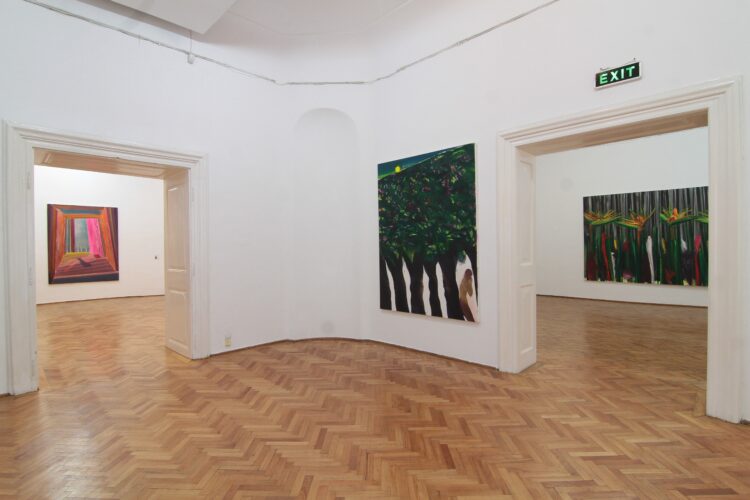
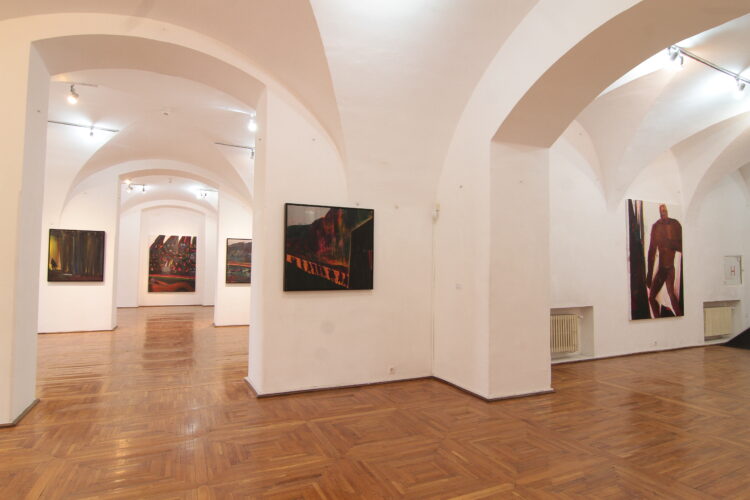
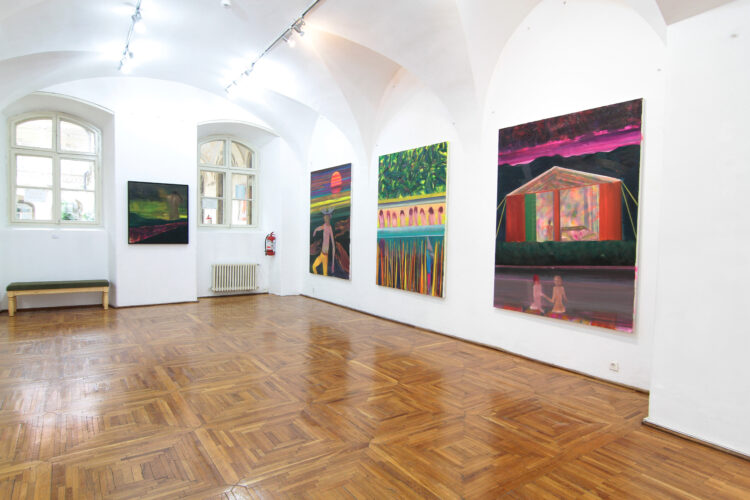
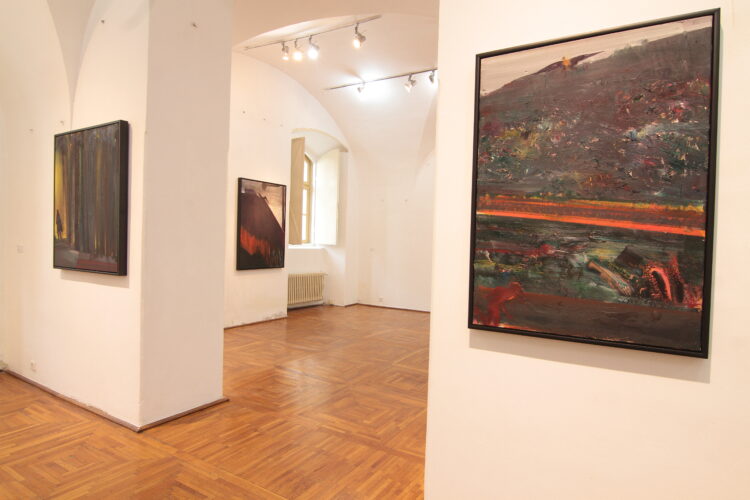
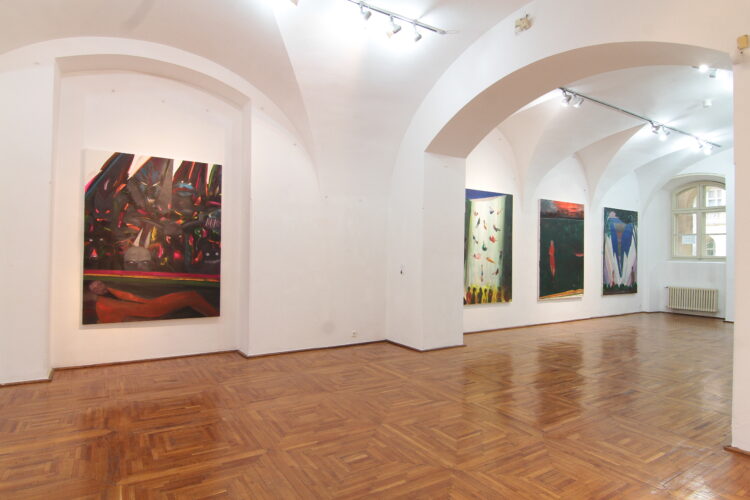
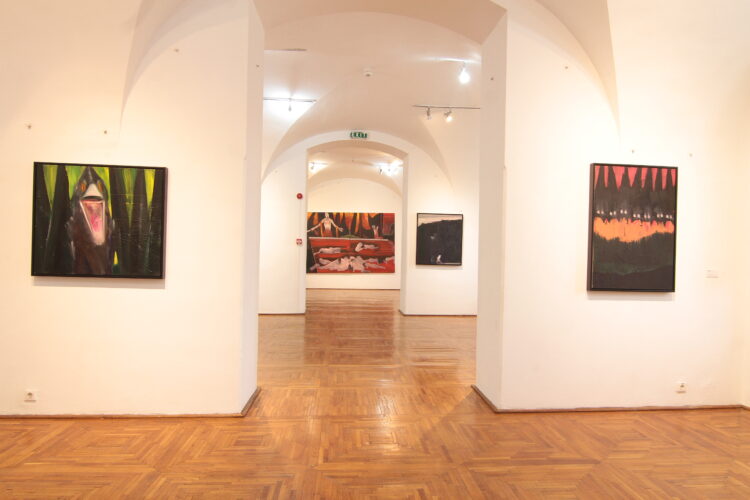
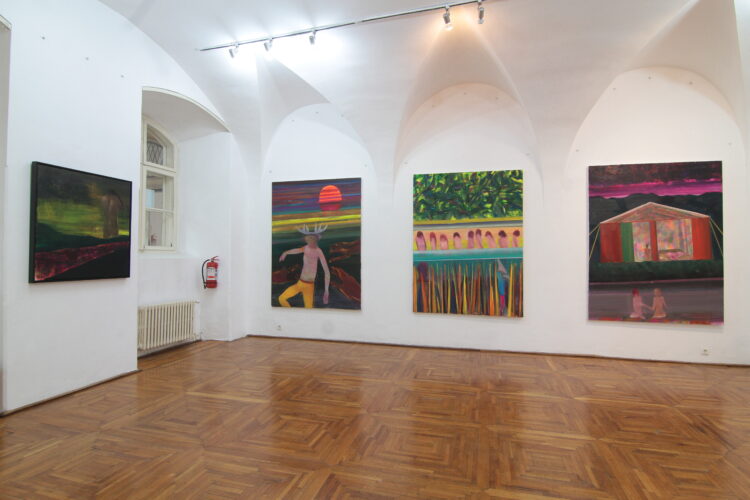
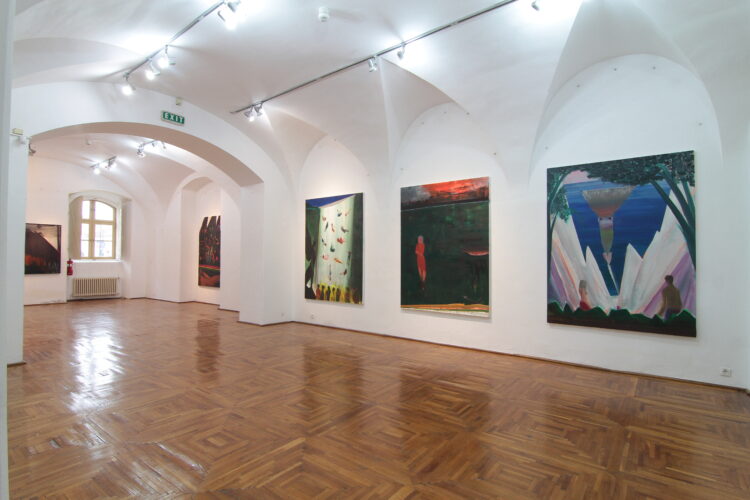
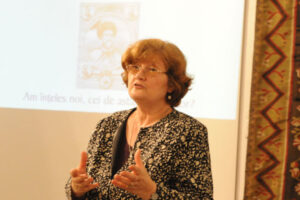
Comments are closed here.